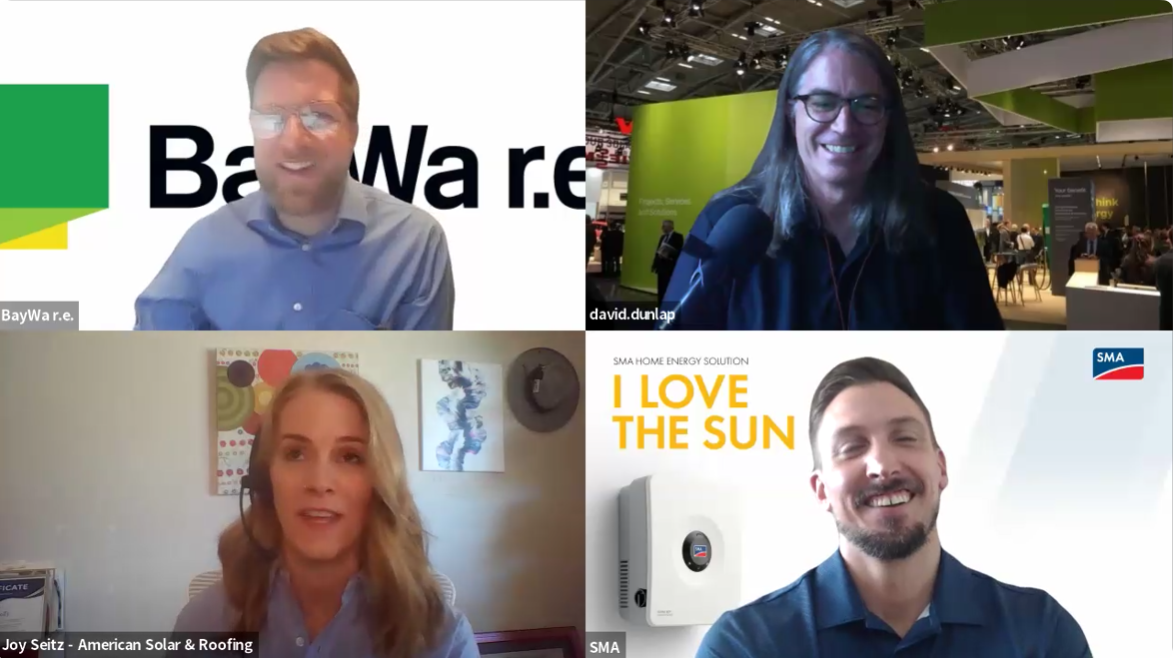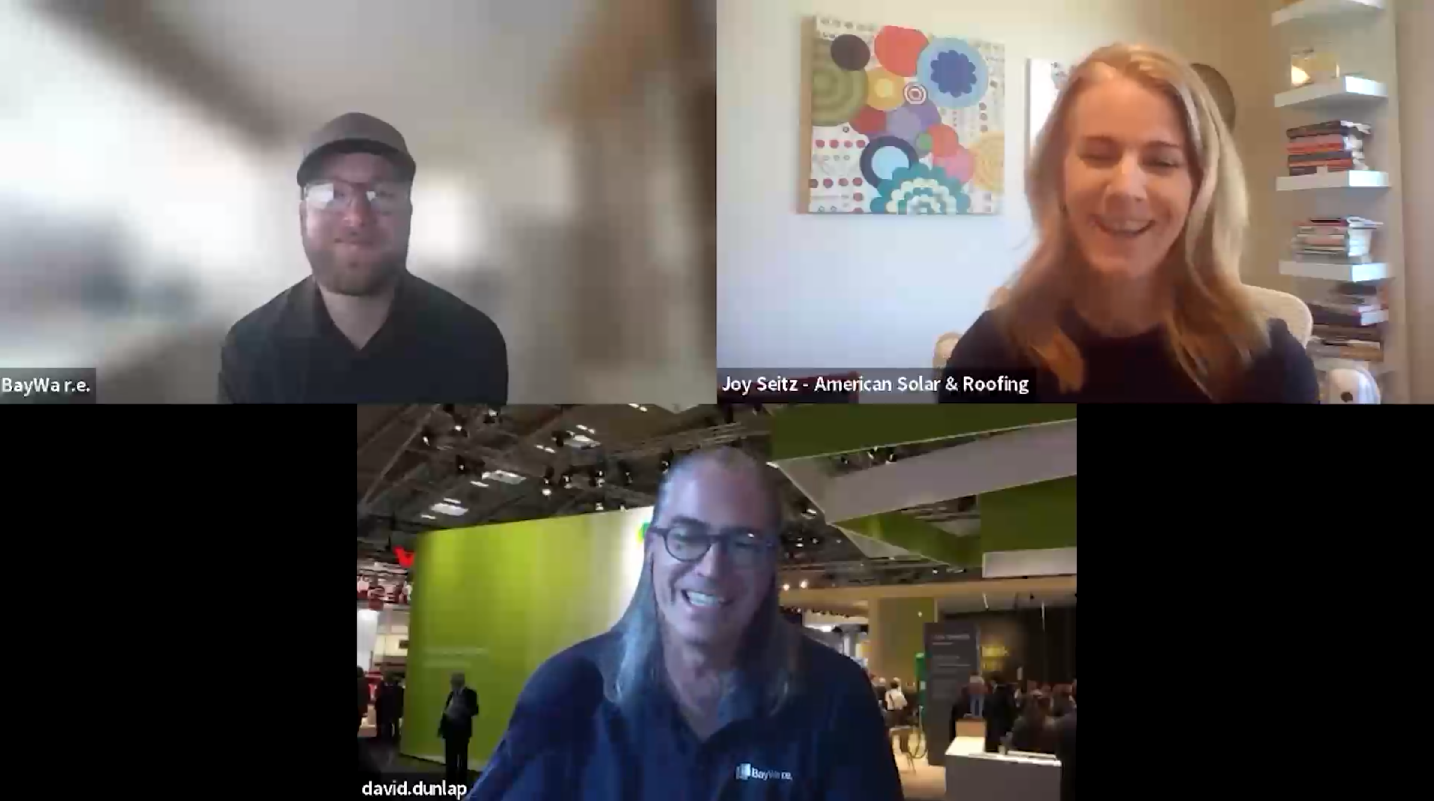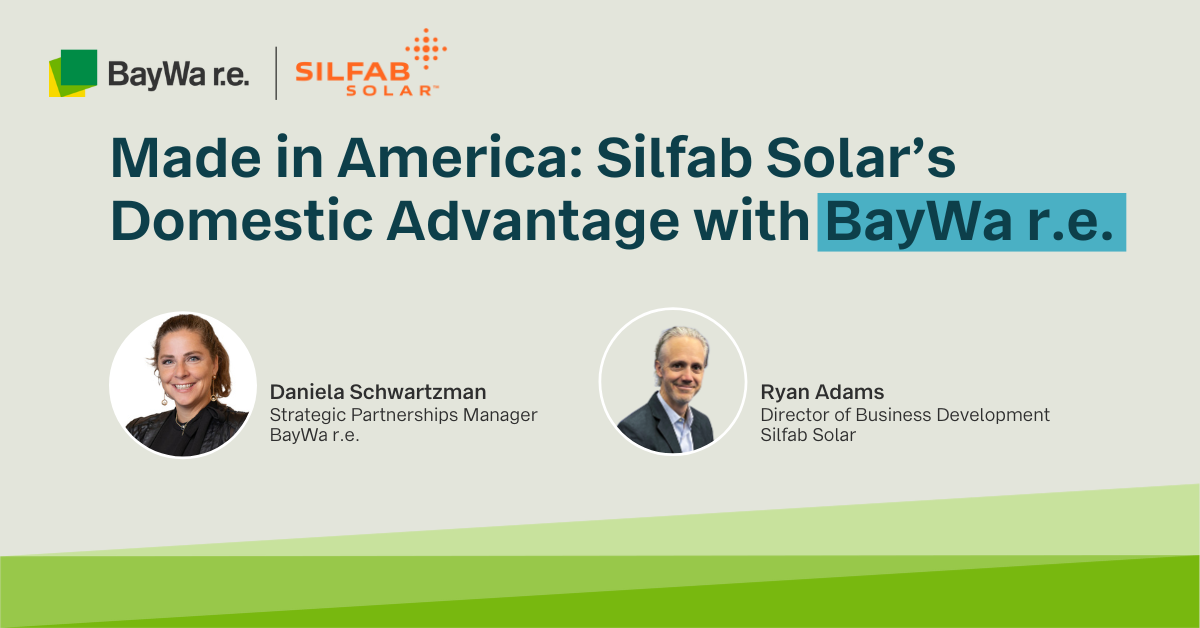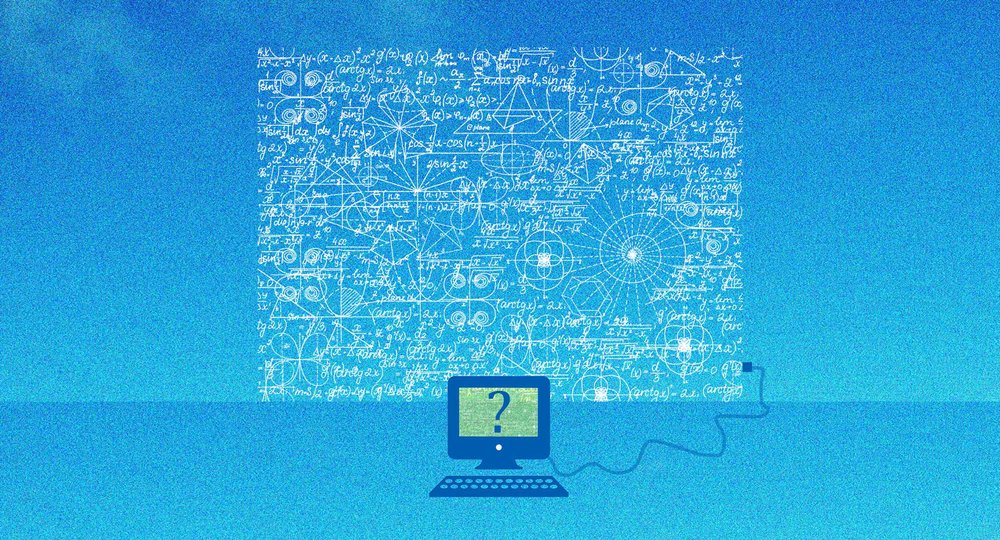 Illustration, Tom Miller
Illustration, Tom Miller
A brief note: There are a lot of powerful software tools out there with robust interfaces, numerous tool integrations, mobile apps, and more. It often seems like you can just plug your company in and let the software work its magic. So I was prepared in this interview for a discussion of different software types, what tools are out there, what’s the “best” software for a certain business, etc. But instead what I got was a much better, useful, and more fundamental discussion about what businesses should really be thinking about when it comes to their software platforms.
As these two industry veterans explain, only after you truly understand your customers and your business does software have much to offer. As Pam succinctly put it, “It’s a product within a process.” This is a great discussion with two women who really know how to guide a process to get the right output.
The interview is long (as are many interviews in Solar r.e.view!) but we hope it proves valuable food for thought as you consider how to create a software platform for your business that truly works.
This conversation has been edited for clarity and length.
Intro
Tom (Tom Miller – Creative Director, BayWa r.e. Solar Systems; Editor – Solar r.e.view): Welcome to you both. Maybe you’d start by introducing yourselves and talk a little bit about your backgrounds and companies? Pam would you like to start?
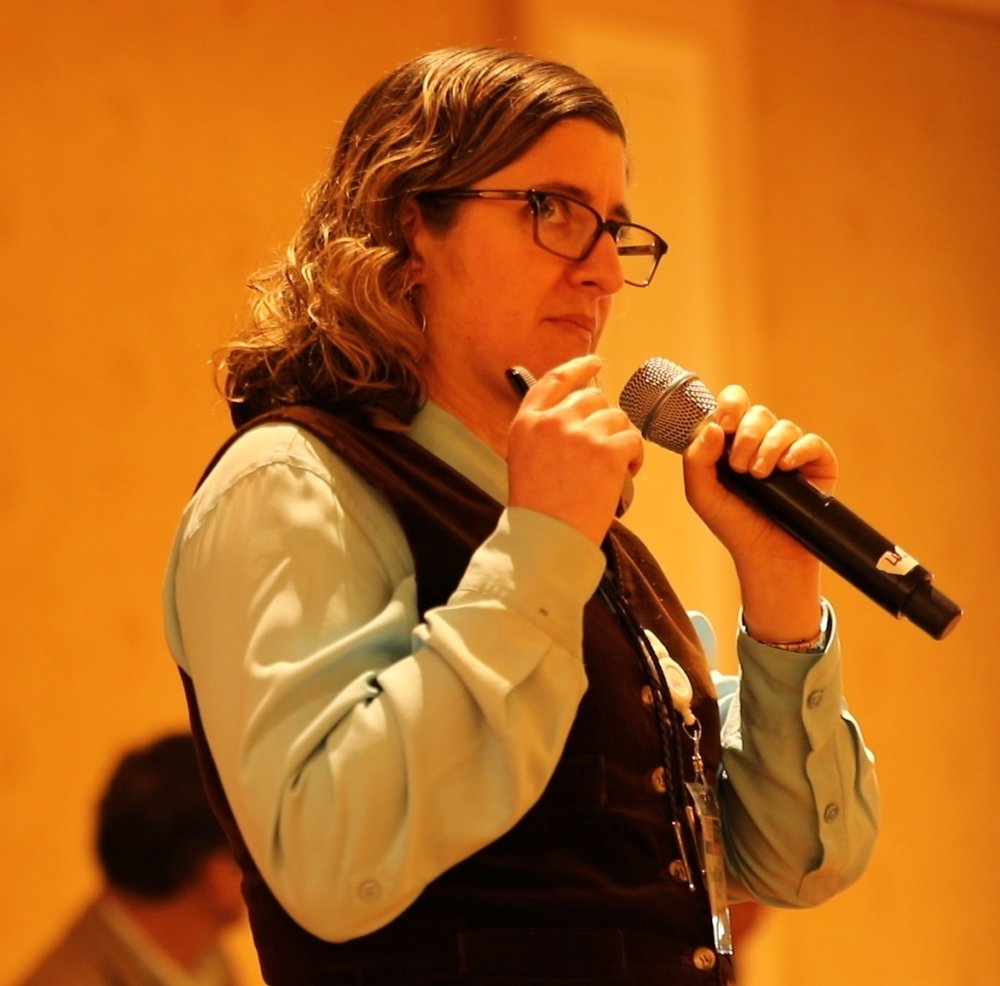 Pam: Absolutely. So my name is Pamela Cargill and I run a consulting firm called Chaolysti. My big focus is helping solar professionals and organizations work better and more effectively; so taking a deeper look at how—and why—they go about doing what they do to get the results they want to get.
Pam: Absolutely. So my name is Pamela Cargill and I run a consulting firm called Chaolysti. My big focus is helping solar professionals and organizations work better and more effectively; so taking a deeper look at how—and why—they go about doing what they do to get the results they want to get.
A lot of that is through optimizing process, looking deeper at the tools they’re using and, most importantly, looking at the ways people interact and collaborate together.
Before starting my practice, I had been working in the solar industry for over a decade for small, regional, and national residential solar businesses. So I’ve had the opportunity to see, experience, and work on solving many of these issues over my career.
Tom: And Dao, how about you?
Dao: So my name is Dao Chou and I’m the CEO of Blue Banyan Solutions. I have extensive experience in the software industry, and in the last ten years or so I’ve been involved specifically in solar.
 Blue Banyan is a software solutions provider, with deep expertise in supporting companies in the solar industry. And many of our employees also come from solar.
Blue Banyan is a software solutions provider, with deep expertise in supporting companies in the solar industry. And many of our employees also come from solar.
Our solutions utilize the power of the NetSuite platform, the leading business management solution for small and medium-sized companies, which we customize for various players in the industry, including installers, distributors, and manufacturers.
We also develop our own products, and the latest one we’re working on is called Solar Success, which is single-source solution for solar installers. The idea with this product is that a contractor can use it to manage all key aspects of their business: including accounting, relationships with financiers, jobs, sales pipelines, inventory, payroll, and a lot more.
Tom: And you both work with all sizes of contractors?
Pam & Dao: Yes.
Dao: A really big range for us.
Pam: And I’d like to say—in terms of size—my passion has really been the small businesses in the industry. Organizations with 50 employees or fewer. Which, thankfully, is a pretty large percentage of our industry, since that’s the makeup of the contractors here!
B2B2C?
Tom: Pam, you work with companies on business efficiency and reducing soft costs, among other things. Software can help reduce a lot of complexities, but can you talk a bit about where software hits a wall? What types of complexity is software not so good at handling? And what needs to be done overcome that?
Pam: I’d say there’s a general perception that there’s an app out there for everything and anything—especially in the kind of world we live in now. That’s the thinking that is dominating in the US. Especially out here in California!
But what software can’t do is take the place of people communicating and understanding each other better. That’s process. That’s trust. That’s humans working together.
Software should facilitate that process, but it can’t be a Band-Aid for those interactions—to actually work effectively together as people.
I think that’s one of the biggest problems that I see when people look at how to approach software. They seem to think that software can just solve it all. If they just had Salesforce, or Netsuite, or this product, then everything would run better.
But software needs to be set within a process that works—a process of how people work together.
Tom: In our emails before this chat, you mentioned that many software providers don’t understand that they’re often building a B2B2C product. Can you break this down for me a bit more?
Pam: It’s something I’ve put a lot of thought into over the last few years. A lot of the software right now is in the sales arena. And a lot of these tools are being used as an intermediary between the contractor—and usually the sales person for the contractor—and the end-customer.
Instead, when we ask ourselves, “Who is the end-user of the software?” Or, “Who is the beneficiary of the product that’s coming out of the software?” it’s often the end-customer. Whether the customer is a homeowner, or a small business owner, or a facilities manager, that individual needs to have the output of that software working for them.
But what I see is a lot of software vendors building products to the specifications that the contractor wants, without thinking all the way through to the end question of, “Who’s actually getting the output? Where do they need to make the decisions they need to make?” So that’s what I mean that a lot of these products are actually B2B2C products. The first B is the software vendor. The contractor is the second B, and the C is the end-customer.
Centralized data and growing pains
Tom: Dao, maybe you can talk a bit about Blue Banyan and how you think about all the stakeholders involved in a project?
Dao: Right. So our focus is a bit different from the type of software that Pam described.
Our focus takes the approach of, “Well, if you don’t have the core data up and running, and your business set up properly, then the way that that data is presented—whether it’s a tool for a sales person, or whether it’s a proposal for the end-user—is going to be suboptimal.
Tom: Can you draw that out a bit more?
Dao: Sure. We really focus on making sure the data within a customer’s system is accurate. And one of the beauties of the NetSuite platform is that—because it’s all in one central database, a “single source of truth”—there’s no confusion or errors from having multiple tools being pieced together to run a business.
We take a lot of pride in the output of our tools and how they can be used for sales people, project management, for purchasing in the purchasing department, managing relationships with vendors, with financiers, and that kind of thing.
For us, it’s really about how well-designed the internal system is; so that the right information gets to the right people and that data can be used in a way that helps everyone in the business do their jobs more effectively.
Tom: Can you talk a bit more about the types of issues that come up when companies are running different software platforms or using different tools. This is a common issue. There can be a lot of internal tension if one department is using one type of software and another department is using a different one.
Dao: Sure. A lot of our customers are still running the same software that they started with, when they started the business. Which is fine for a certain size or scale of business. But the customers that we talk to, or talk to us, are experiencing increasing pains around that.
One of the most common complaints is that the reports that come out of one system, say project management, are different from the reports that come out of another system, like accounting. They should be the same, but they’re not. So they’re dealing with two different sources of data and they spend a lot of time and money trying to reconcile those data between multiple systems, which impacts their productivity, their profitability, and even their reputation with the vendor and the end-customer.
Also, they might have a lot of inefficiencies around having to manually enter or manage their data. Sometimes they end up having to do double-entry into multiple systems. And then they find out that one of their systems is being upgraded and is no longer compatible with another part of their system!
So there’s a lot of really cobbled-together, different processes, which—of course—is not surprising when you’re developing a business.
But at some point, businesses realize the fact that all of these inefficient processes are holding them back and keeping them from being able to really focus on raising their businesses to the next level.
A product within a process
Tom: Pam, maybe you’d jump in here. Investing in IT can be very expensive and complicated. What are the questions, and what’s the process, when working with a company to determine which applications to use and what’s going to most positively affect ROI?
Pam: Well…I’d actually start more general. It’s good for organizations to step back, before they look at any software, and ask themselves, “What am I actually trying to accomplish here?” I find that a number of the organizations that I’ve worked with—or who contact me—they ask me a question like, “Pam, what’s the best design software?” And I immediately asked them, “Well, to do what?”
And what I’m trying to get them to understand is that it’s more important to contextualize the outcomes that you’re trying to get—within the overall scope of the process and the customer journey—rather than asking the technically oriented question of: “What’s the best CRM? What’s the best design?” Because there’s no answer to that without fist understanding your business, your goals, and your outcomes.
Without doing that work, without having that understood, there is no “best” CRM. There is no “best” design tool. There’s only the right tool for you: to provide you the simplest and most streamlined proposal for a certain customer segment.
When I worked at Sungevity, for instance, there was a very big software project going on and I ended up working on that team. And that’s where that type of analytical thinking was really drilled into me, from a lot of very experienced software product managers.
Really asking the question of, “So what are you actually trying to do here? What is the outcome you’re trying to get to?” And the more I ask those questions when I work with contractors—or with other folks in the supply chain—the more likely we’ll be able to come to a conclusion that will narrow down to what we actually need.
And then, when we go shopping for software solutions, it will feel like a product within a process.
And we can take that same conversation from the smallest businesses all the way up to the largest. Obviously, it’s going to take more digging, and more thought, for a larger organization—because there’s a lot more complexity—but in a smaller organization it’s still the same process. What is my company trying to achieve? What is the customer journey that I’m trying to support? And what’s the simplest way that I can do this?
Tom: Dao, what are your thoughts on that? When you work with companies, what are the common places to start? What’s the low-hanging fruit?
Dao: We actually run into a lot of relatively easy things that have a big impact on people’s businesses.
One of the things that I mentioned before is that the platform that we develop is a single database. And that seems like a very simple thing, but it has enormous implications and benefits. One of the things is that—just by the nature of being a single database—you can have complete visibility into your entire business.
So, whether you’re doing a little manufacturing on the side, whether you have multiple relationships with your suppliers, whether you have multiple relationships with financiers, or have other design tools—at the executive level, you can see everything; how changes in one area impacts another area, which is really important.
This is something that is not easy to do with mixed systems. But in our kind of solution, a sales person has visibility into the real-time availability of specific parts, or modules, or inverters, or whatever. And on the other side, a planner has real-time access to the sales pipeline. So there are a lot of ways—because of this visibility into the day-to-day—to develop more effectiveness in what you’re doing.
And if I could just tag on to what Pam was saying before for a minute…
Tom: Sure.
Dao: Pam mentioned that when you start asking questions about “what is the best design tool?” or “what is the best quoting tool”, you realize that while there might be a good answer for that particular time, in six months or year, the answer might be different.
Pam: That’s so true!
Dao: The industry is going to continue to evolve. As technology improves, as regulations change, as prices come down in certain areas, there’s always going to be shifting and changing of what’s available and what is the “best tool” for a particular purpose.
So it’s important for businesses who are working with all of these tools—and have to pay for them—to take an approach that is flexible enough to allow them to be able to make those changes without having a huge expense.
An example that I like to talk about is with financiers. So an installer might have a relationship with a particular financier—maybe they have a favorite one that they work with—and that financier has some specific requirements about what documents they need at certain points, or certain milestones, signatures, percentage completion for payments, and that kind of thing.
So there is a specific set of rules to working with that financier. And that’s all great. And if that set of rules stays the same forever then it makes sense to go ahead and hardcode that in into your process.
Pam: But they don’t! [laughs]
Dao: [laughs] Yeah! That’s right! As soon as something changes, which, as we know, happens all the time—maybe that financier goes out of business, or maybe there’s another financier that has better terms for you—then you’re in trouble.
So when you start to need that flexibility, you realize that it’s really not a good idea to hardcode things, because there’s a big cost every time you need to make a shift.
Not only is there a big cost financially, but also for the people managing those projects. Every time you switch to a different financier, you potentially have to switch to a different tool. And then there’s a whole new learning process involved as well.
So the approach that is a little more scalable is to find solutions that have the flexibility to seamlessly adapt to new parameters by using rule-based technology.
Getting up to speed
Tom: How much time do you spend building these tools versus training people how to use them? How much resource do you dedicate to training and getting people up to speed with what you build?
Dao: We have a couple of different approaches to training. One of the key parts to this is: as we develop a solution with our clients, we’re not doing it in a vacuum, or as outsiders.
We consider the client to be an equal partner in the process. What that means is that we find certain users—key business users, internal champions, if you like—and we work with them from the beginning to do two things:
1) understand what their current processes and goals are, and then take them through the process of building out a solution for that, and
2) what’s called user acceptance testing. That means that they are hands-on in using the product throughout the development process. That is a very important part of what, ultimately, can be called the training process.
We actually ask our key business users to be the lead in the training process, since they’ve been involved since the beginning. We help them develop documentation, facilitate training, and we really expect them to be the leaders in advocating the benefits of the solution internally across the company, and to lead the training the other users in their departments or company.
And we’ve found that that is the most successful strategy, because they’re the ones who are going to be living, and working, and using the system every day after “go live”.
So the fact that they’re training themselves—and therefore also advocating for adoption and helping their colleagues work through whatever questions or problems they’re having—is the most effective way to bring them up to speed.
Change management
Tom: Pam, do you come across resistance from companies when it comes to digging into their processes? If so, how do you overcome that? How do you convince people that this stuff is important—and that all the training is important?
Pam: This is really, probably, the hardest part—managing change. People don’t like to change. Organizations don’t like to change. It’s uncomfortable! It’s risky. It takes time away from doing the things and tasks that people need to get done. People have a very hard time stepping back.
But if they don’t do that, and if we, as solutions providers—whether we’re the vendor, or the consultants, or the implementation partners—if that change management portion is not baked in—if it’s positioned as an optional portion, or not even considered at all—the likelihood that the change will stick is a lot lower.
And one of the challenges I’ve seen and heard from clients and colleagues in the industry—around solar design software or CRM software adoption—was that they failed to get adoption because their idea was, “I’ll just roll it out and everyone will figure it out as they go.”
What that doesn’t take into consideration is the very human element of managing change.
People need to be helped to feel comfortable and invited into the process of—not only changing what they’re doing now— but throughout the whole process of getting the software going and making potential changes to the process.
As far as I’m concerned, if you’re not taking a look at your process—and how people are engaging with the customers, and engaging with each other, together, to fulfill projects—then you’re not actually implementing anything!
The software is just a vehicle that you climb into that helps you get to a goal. It’s not magic. It needs time, energy, and effort. And that means taking away time from other things. And it’s very difficult. Especially for small businesses to do that. But without that level of effort, it’s not going to give you the level of results you want.
Tom: Dao, you’re a developer. I’m sure you believe in some kind of magic to the software. Where does software really shine?
Dao: A business needs to have the right people, doing the right things, and the right business processes and strategy. Those kinds of things are basic requirements. After that, effective software is going to be software that you don’t have to spend a lot of effort trying to learn and make work. Software can enable you to better run the operations of your business and provide you with the potential to grow, scale, integrate, and work with colleagues, in all aspects of the business, more easily. But software is not a magic solution; it takes active engagement.
Cost savings, referrals, notifications, & KPIs
Tom: Do you have any data on the cost savings that software can offer? Do you talk to companies about that? Can you give us a sense of that?
Dao: Well, it’s hard to put numbers down. It very much depends on the type of business, and the type of metrics, that you’re using. We’re actually developing some innovative metrics that can help our customers better measure the productivity gains that their software investment was intended to provide.
When we first meet with our customers, they’re often really focused on the sales pipeline. And there’s obviously a cost to upgrading their software systems. But we try and help them change the way that they’re thinking about software—from just money going out, the cost—to understanding there are different ROI ways to justify it, the value.
For example, there are easy calculations you can make around headcount. There are often people in the office whose job it is to work with data manually. And there are costs associated with errors created as a result of doing things manually—like pricing or inventory availability calculated incorrectly. But also, the customer experience quality can be affected as well if you’re providing incorrect information to your project manager. So there are all sorts of savings around the efficient resource management piece of it.
But in addition to that, there are efficiencies to be gained around things like: how do you manage your projects? Seeing flags in your projects earlier than you could see them before. And shortening the project’s overall timeline. And the financial benefits of being able to turn things around one or two days faster than you could before. Closing your books earlier. So there are definitely metrics that we are developing that will bring those kinds of benefits to light.
Tom: Pam.
Pam: I would even add something to that—and Dao’s bringing up a really good point here.
I would wrap everything she saying in: companies need to have goals and they need to have good key performance indicators.
Without goals and key performance indicators how do you even know how you could and can improve, and what is possible? So, in all of these areas that she was mentioning, there are specific goals you can make for your company—very specific goals.
And those goals have to be specific, they have to be measurable, they have to be actionable, and they have to be timely—or time sensitive, as some people say. And the software should be one of the keys to help you get to that goal.
For instance, if you had a company goal of: “We want to increase our referrals by the beginning of 2018 by 20%.” That’s pretty specific. That’s pretty time sensitive. That’s relevant. You can measure it. And you can take action on it. Then, if you’re looking for someone to help you achieve that goal, you can break it down into even smaller components. “What are all the things we need to do in order to help us meet that goal—across every function of our company? In our installation process; in our project management and customer service; in the sales cycle; how we market; in how we go about providing all of the ancillary support?”
In this case we want to consider the entire customer experience: everything the customer sees, feels, touches, experiences.”
When you think about how you’re delivering your service like that—how you break it down into the big goal and the micro goals across the company—then it becomes a lot easier to see whether what’s being offered could support your needs, or what functions it needs to support. And that, I think, is a really great way of going about that process.
Tom: Dao, maybe you can take Pam’s goal of increasing referrals and describe what the software ecosystem around that goal looks like? What’s going on in terms of how departments communicate, using software, around a goal like that?
Dao: One of the things we’re able to do relatively easily—you mentioned low-hanging fruit—and that really helps our customers, is around providing status and report notifications, to both internal people and the customers, in the form of notifications.
For example, customers want to know what’s happening with their projects, right? So it’s fairly easy to define what kind of notifications they should get, based on certain triggers. And we can set those up so they have the visibility that they want into their project status.
Similarly—Pam mentioned KPIs—we have this concept of a dashboard where, when an internal user logs in, they have access and immediate visibility to all the Key Performance Indicators they care about, including the interactions between them, like exactly how a 5% change in pricing of one component affects the overall profitability of the project. And there are a number of other tools around business analysis that are easy to build and easy to access.
Blue Banyan has a special focus—and we take a lot of pride in these notification reports—on what we like to call, “Oops Reports”. Essentially, what we do is work with the customer to define: “What are the things that you want to know? What are the things that you care about, that are happening, but you can’t see right now? What are the changes that you need to be alerted to?”
For example, on the accounting side, if you want to see exactly what’s happening with someone in accounts receivable, you can identify key criteria—dollar amounts, time periods, or whatever—and get notified through email or through your dashboard about a particular flag or situation that you want to know about. You can have email reminders; you can use the calendar… There’s access to information that you might not even know about. And, as our customers learn more about a system’s capabilities, they think of all kinds of new ways to use the information that’s already there in the system to more proactively do the job.
Tom: Are you integrating these things with apps that contractors can use in the field? Like logging in inventory at a job site?
Dao: Yeah. The products that we create all have mobile access. So a lot of the things that you can do in the office you can also do in the field.
Will solar contractors stick around?
Tom: I’ve been asking people if solar contracting is going to remain a construction business, or if it’s going to morph into something else? Some see it sticking around, some see energy contracting as an opportunity. Thoughts?
Pam: It’s very likely that they are going to be two types of contractors in the future that have to deal with energy. There will be specialists: for instance, specialty solar contractors, which may simply provide construction services to general contractors.
The challenge there is that that’s not a very high-margin or high-value business. If you’re only providing EPC services to another entity, it’s your bid versus another company’s bid. And that’s just a race to the bottom. You’re bidding on commodities, you’re just bidding construction services. You’ll stay busy, but you won’t be able to capture additional value from the end-customer because you’ll constantly be bidding your services to other construction firms.
Now the full energy contractor… Say they were working with a client in a more valuable setting to look at all the different ways that they could save, or use, or better utilize energy, within the overall scope of their lifestyle and personal goals, there’s a lot more value to be captured there.
That contractor could go back and provide many years worth of other products and services, installing the EV charger, energy storage, whole-home energy monitoring, smart home, things we can’t even imagine yet because they haven’t been thought of yet. Besides solar. This is a real emerging field.
But when I think operationally…as much as I love to dream about the future, we need to think about where we are now and where the rubber is hitting the road. We’re still very caught up in the artisanship of product integration as solar contractors. “I have these modules, these inverters, this racking system, this monitoring thing…” And that process is not as valuable to the customer as is getting a great experience throughout the overall scope of the project.
So there’s a shift in thinking that needs to happen. Yes, it’s important to know the products that you’re integrating, and make sure that it’s done well, and installed well— super important. But that’s really the minimum viable solar contracting business, is being able to do that.
The contracting businesses that are going to excel, are the ones who will do more than just good workmanship and product integration. They’re going to provide great customer experiences. They’re going to provide additional products and services later on.
So forget all the gimmicks about lowering customer acquisition costs. The only way you can lower customer acquisition costs as a contractor is to be able to offer other products and services to that customer later on.
Tom: Dao, on the solar software side, what do you think? What’s on your radar for the next ten years?
Dao: I think Pam is right. There will continue to be innovations around the equipment, and challenges around integration of equipment types, which need to be done well.
I think the connections—with more than just your inverters and panels—is where we need to start looking. Whether it’s the Internet Of Things; whether it’s aspects of your smart home; whether it’s connections with other systems outside of your home…
Those things are going to start pushing the conversation around the necessity for data standardizations—, like the DOE’s Orange Button initiative. And coming to some agreement within the industry about what those should look like and how they’ll start working together. I think those are some things to watch for.
Tom: Okay. Thank you both for taking the time today. It’s been very interesting!
Dao, Pam: You’re welcome. Thanks!

